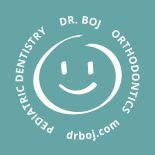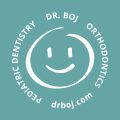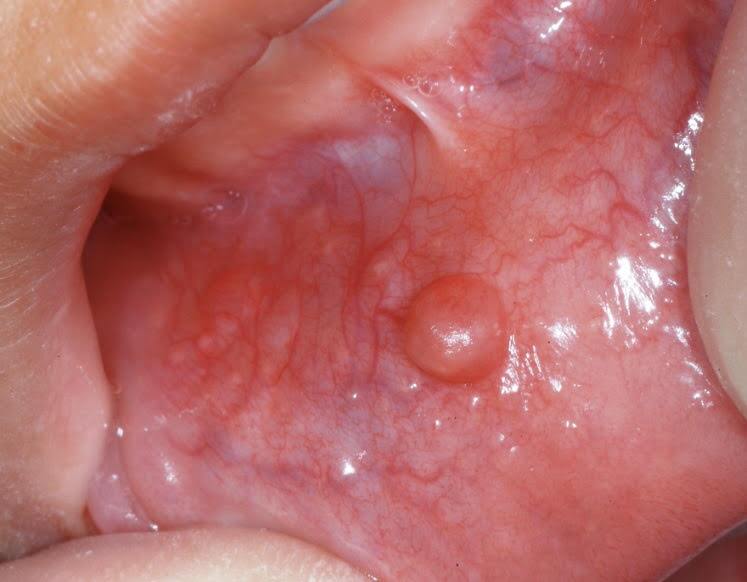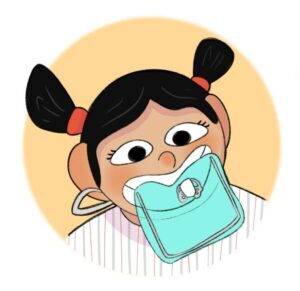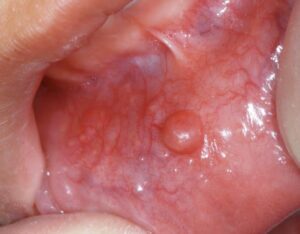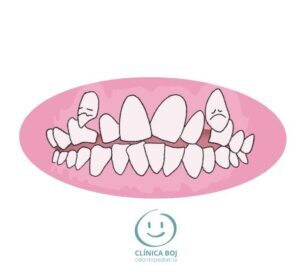Mucocele treatment in kids and teens: clinical case report
Is mucocele in mouth usual in children and young adults?
Mucocele treatment in children and young adults should be done after diagnosing how it was caused. In addition, we must determine if the treatment of a mucous cyst is necessary.
Sometimes this lesion in the mouth disappears by itself in a few weeks. An appointment with the pediatric dentist is necessary if this is not the case, as its appearance is frequent.
A few days ago, we treated a five years old girl who had one mucocele on the internal part of her lower lip. With laser surgery, the recovery after the complete surgical removal of the lesion was, in reality, fast. The surgical removal consists in the elimination of the cyst produced by salivary glands and salivary ducts.
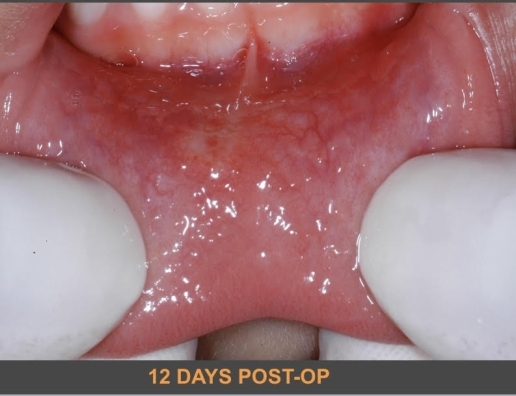
What is a mucocele?
Mucocele is a common lesion of the buccal mucosa that appears as a lump or cyst. Sometimes its appearance resembles a blister of transparent, pinkish or bluish tones (color azulado).
The pediatric dentist will certainly examine and evaluate the oral mucous cyst (quiste mucoso oral). If necessary, the healthcare provider must determine the cause to obtain a differential diagnosis with other types of lesions.
What makes mucous cysts worse?
In general, a repetitive habit causes micro-traumatisms such as lip biting or lip sucking. It may also happen because of tongue biting or tongue sucking: sometimes consciously and others unconsciously. Many times a day, children and teenagers bite or suck on areas of the oral mucosa.
How many types of mucocele are there?
Undoubtedly, the cause determines the characteristics and types of oral mucoceles (tipos de mucocele) that we need to treat:
Retention mucocele
Normally, it appears when there is trauma to the oral mucosa or minor salivary ducts. In these cases, there is a fluid filled nodular tumor. From two years of age onwards we begin to see mucous cyst in the dental clinic.
Mucocele by extravasation
This type of mucocele mostly affects children and young people, appearing when:
1. Biting pens or other objects in the mouth. These are acquired habits.
2. There is friction from orthodontic appliances or brackets on the lips or cheeks.
3. There are multiple bites of the internal oral epithelial tissue by the children themselves.
4. Occasionally, they arise from a single severe trauma to the lip, tongue or oral mucosa. For example, when an accident causes a strong bite.
In most cases, if the problem remains in the oral cavity, a surgical excision is necessary.
Where are oral mucoceles located?
The mucoceles that we treat most frequently are:
Labial mucocele.
Mucoceles in the internal areas of the lips are protruding lesions that involve the minor salivary glands. (glándula salival menor)
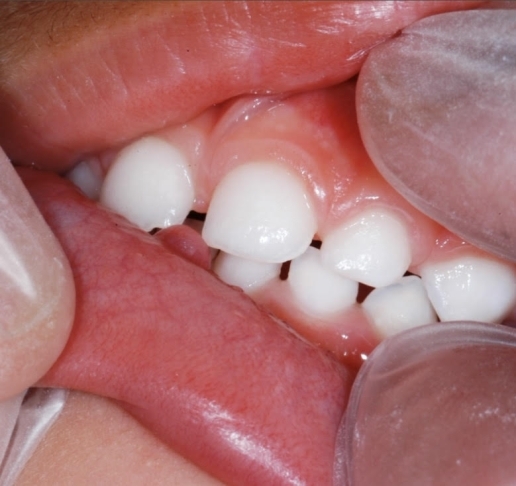
Mucocele on the tongue or under the tongue.
For sure, the tongue is a quite common place to diagnose a mucocele. Additionally, you can also find it in the floor of the mouth, although it is not as frequent as in the tongue.
Mucocele on the palate
Rarely, mucoceles appear in the palate of the mouth.
Are mucoceles carcinogenic?
As we have mentioned, lesions of the minor salivary glands are frequent in children and young people. This oral pathology that always appears in soft tissues is benign.
In this sense, we should not worry and we should reassure the patient’s parents about it. However, it is always advisable to perform a biopsy of the extracted tissue to confirm the diagnosis.
Can a mucocele go away on its own?
Yes, it can go away if it is not too large and the child stops sucking or bite the affected soft tissue implicated. The, the liquid in the cyst drains by itself.
We should remove the mucocele if the child experiences discomfort when talking or eating.
Please, do not let them try to rupture or remove the cyst at home. Inform them about this issue. Otherwise, as soon as the lesion heals, it will fill up again.
The lesion can re-appear, even removing it, if the sucking or biting habit continues. Nevertheless, most childs stop the habit after surgery.
Nowadays, doctors add lasers in their armamentarium for treating these cases. They use a type of erbium, diode or CO2 surgical laser as a treatment option. This can replace the traditional cold-cut scalpel, electric scalpel or cryotherapy.
What is the fastest way to heal a mucocele?
We need to emphasize the benefits of using laser technology to completely remove oral mucoceles cysts:
a) Because it decreases the dose of local infiltrated anesthesia needed.
Most of the cases need some infiltration of anesthesia but much less than when using other techniques.
b) On other occasions, it even avoids completely infiltrated local anesthesia.
With no doubt, laser reduces the perception of pain. For these type of cases we use only topical anesthetic.
c) Because it eliminates almost all bleeding by sealing the capillaries around the surgical area.
This helps to practice a more precise and refined technique. Also, it helps to improve the view of the area while performing the laser surgery.
d) As the anti-bacterial and disinfectant properties favor the post-surgical period and reduce the subsequent intake of antibiotics and anti-inflammatories.
Finally, following mucocele surgery, we recommend families a soft diet the same day. This helps preventing the child or young person from sucking or biting the area by accident.
To end, avoiding hot meals the same day is also a recommendation. This prevents bleeding due to the vasodilation that hot temperatures produce.
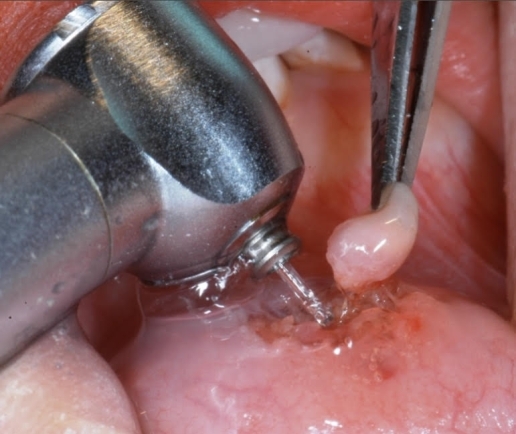
Mucocele treatment in mouth: clinical case report
This post has pictures of a girl treated with an erbium laser in our Dental Clinic. The cause of her lower labial (labio inferior) mucocele is the habit of biting herself on the inner area. The surgical removal (extirpación quirúrgica) or mucocele treatment took place recently.
References:
